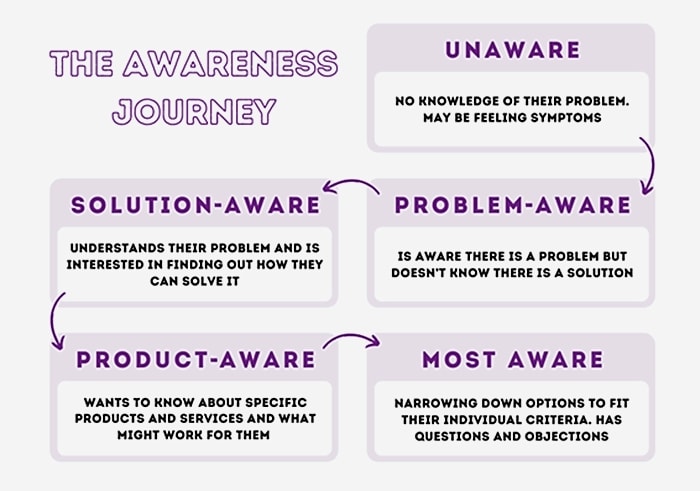You're researching a new software tool for managing your sales process. You've been thinking about maybe, potentially, buying something, and you've started to inquire with some companies for some more information. You definitely haven't narrowed down your options; you're just in the very beginning stages of research.
Next thing you know, your phone rings...
And, after you've let it ring out (because it's 2022 and you don't answer unknown numbers), you get a voicemail from the company you've been researching. The message says they "just want to chat" about your recent inquiry.
The problem is that you aren't ready to chat. Because you're not even sure what you are looking for yet—you're just researching. You certainly aren't prepared to talk to the sales team yet—even if they're just trying to be helpful.
Getting contacted by a sales representative before you are ready to speak to them is one of the most off-putting experiences for a buyer. Fully 76% of consumers expect a tailored buying experience, and 71% report frustration when that expectation has not been met, according to McKinsey research, which also found that...
- 66% of people expect messaging to be tailored to their needs.
- 59% want timely communication tied to key moments.
Never has understanding where the potential buyer is in the buying process been more imperative to the success of the sale.
The amount of information available on any given subject is so vast, it's our prerogative as buyers to peruse it at our leisure. We don't want to be hassled by sales representatives until we're ready.
Prospects' sales intent behavior allows you, the marketer, to be tuned into whether they are ready to hear from salespeople yet, including whether they want to be left alone or need a little more nurture first.
This article explores sales intent behavior, helping you understand precisely where and when your sales team should get involved with leads—and when you should be nurturing instead.
What is sales intent behavior?
Prospects act differently when they are ready to buy vs. when they don't.
Sales intent = a customer's intention to purchase a product or service.
Sales intent behavior = the specific behavior people display when they are ready to buy.
Understanding sales intent behavior is crucial because it allows us to identify prospects in the buying journey and it tells us whether they're ready for us to contact them.
How do we discern sales intent?
We track and understand sales intent behavior via the process of behavioral progressive profiling, which allows us to progressively collect relevant behavior. Analyzing the collected information allows us to identify where our prospective customers are in the awareness journey.
We can use marketing automation tools to track a prospect's activity—to see what they click on and how they navigate to blog posts and articles, and how they interact with salient content.
Tracking that activity allows us to profile prospect's sales intent and serve up the right content to them—and make the right level of contact at the right time.
>> Related content: How to use behavioral progressive profiling to drive demand generation
Why is understanding sales intent behavior important?
Let's look back to our story at the beginning...
If you get a sales call before you are ready to speak to someone, how does that make you feel?
Probably annoyed, hassled, pressured. And that's likely to influence your attitude toward the company that contacted you. So much so that if and when you are ready to buy, you might not want to contact that company again.
Understanding sales intent behavior is integral to the success of Sales. It allows us to identify when potential customers move from Marketing-qualified leads (MQL) to Sales-qualified leads (SQL).
Marketing-qualified lead = someone who could become a customer if nurtured effectively, but who is not yet ready to hear from Sales
Sales-qualified lead = someone who has been vetted and who is primed and ready to talk about buying
When we know prospects are primed and ready to purchase, we know what content to serve them and when to contact them. We can time our interventions to coincide with their purchase readiness (and even engineer this readiness—more on that later).
So instead of creating superficial "random acts of content," you can offer prospects the right content at the right time—the type of content they need if they are to solve their current pain point—so that you can move them toward purchase.
In a world where Sales must do more with less (time, money, and attention), intent data provides insight into where to concentrate effort and engage in activities. It can uncover new qualified leads, create meaningful relationships, and drive more sales.
Examples of sales intent behavior
People act differently when they are ready to buy vs. when they're just researching. These are some sales intent behaviors people might display:
- Visit the Pricing page
- Click through from a specific email
- Visit the Contact Us page
- Download a buyer's guide
If you can progressively track your prospects and identify when they are hitting such thresholds, then you can engineer campaigns to drive sales intent.
How do the awareness stages influence sales intent behavior?
Understanding sales intent behavior is all about understanding at what stage Sales should become involved. Too early—or too late—and you risk losing the sale.
Exactly where Sales joins the conversation will differ, depending on each business. And to figure out what works for you, you need to look at the awareness stages.
The five awareness stages
There are five levels of awareness that your potential buyer might have. Which stage they are in dictates whether they are ready to speak to Sales.
Let's look at the five awareness stages, along with an example of what that stage looks like for a company that wants to help customers create content.
- Completely Unaware: Customers don't know why they have a need or who you are. They are just dealing with symptoms of a problem.
Example: A business is living hand-to-mouth: After finishing a job, it never has any more customers lined up. And, as a result, it struggles to make enough revenue to cover expenses.
- Problem-Aware: Customers are aware they have a core problem and they are broadly exploring solutions. They are not looking for specific solutions or companies yet.
Example: The business realizes it needs more consistent leads and customers, but doesn't know exactly how to go about getting them. It has always just relied on referrals or outbound sales.
- Solution-Aware: Customers know about the potential solutions to their problem, but haven't yet narrowed those options down to your company/product/service.
Example: This business realizes it needs a way to increase leads and knows there are multiple potential ways of doing so, including creating inbound content, social media management, email marketing, FB ads, networking groups, etc.
- Product-Aware: Customers are looking for specific products to fit their needs. They are exploring the marketplace to find which products fit their needs.
Example: The business is now looking for specific companies to help it create blog posts to help drive leads and sales.
- Most Aware: Customers know about your product. They know it will solve their problem, and they are ready to buy. But to commit to purchasing, they need to justify and validate their reasons.
Example: The business knows who you are, and wants to invest in your blogging service, but now it needs to justify including it in its budget and it has questions and objections.

Understanding the awareness journey helps you decipher—based on sales intent behavior—where and when in that journey your sales team should get involved.
>> Related content: What are awareness stages, and why does it matter?
At which awareness stage should Sales get involved?
The question now becomes, "What awareness stage is most appropriate for my sales team to get involved?"
B2B prospects are, on average, already 67% of the way into the purchasing journey before they engage with a salesperson.
That's good news: People like to do their own research before speaking to Sales.
Some industries have a particularly complex buying process, in which case the sales team might need to get involved early on—maybe in the solution-aware stage. However, for most businesses and industries, that's too early; reaching out at that point can be off-putting. It's more appropriate to involve the sales team at the product- or most aware stage.
Ultimately you need to figure out what behavior your prospects display when they become potentially ready to buy and therefore ready to talk to your sales team.
From there, you need to figure out what content you need to create to support that transition from MQL to SQL, rather than passively hoping for conversion.
How to use sales intent data to drive demand generation
When you're clear on when in the process it's time for Sales to get involved—what do you do with that information?
It's not enough to just track and categorize behavior, you need to do something with that information. You need to have an action ready so you can help bring about the next behavior.
At this stage, some marketing teams just hand prospects off to Sales. However, even when a lead is Sales qualified, getting it over the finish line isn't solely Sales's job; rather, it's time for Marketing to nurture the relationship to help justify why your company, product, or service is the right choice.
You can do that by creating the right content together with Sales, offer it up to those leads at the right time, and even use that content to trigger SQL.
What are data anchors, and why you should use them
In demand generation, you build campaigns to elicit the behaviors you want potential customers to display.
To that end, marketing should be driven by data. (We hear that time and time again.) But what's the point in collecting multiple points of data if you don't employ it?
The problem is that although many marketers analyze content data after it is published so they can understand what is working and what isn't, they rarely use data to inform the content before it is created.
We can be smart with the data we have and use it to create content—blog posts, articles, white papers, etc.— that indicate a particular point in the sales process.
For example, you might create a blog post or lead magnet that indicates when someone has moved from MQL to SQL. That content might be a "buyer's guide" or a blog post on "lead times," both of which would indicate their readers are serious about buying (rather than in some other stage of the awareness journey).
We call such content a data anchor.
A data anchor is a specific piece of content that signifies when a prospect has reached a particular point in the awareness and sales cycle
Data anchors are a way of engineering content in a way that identifies sales intent behavior rather than passively letting the process play out.
>> Related content: What is a data-driven content plan?
Need some help?
Understanding sales intent behavior is crucial to building relationships and making sales.
If you know where that behavior sits within your buyer and awareness journeys, then you can cleverly create campaigns that cater to, and even engineer, sales intent behavior.
Need some help with doing all that? We're happy to help. Reach out!




